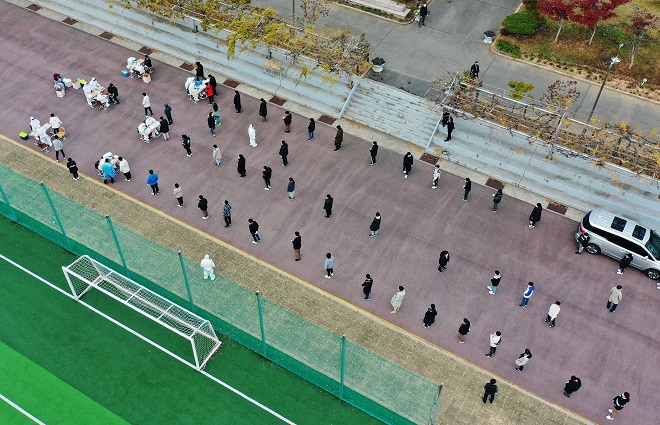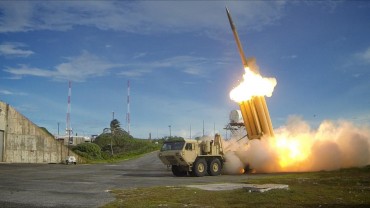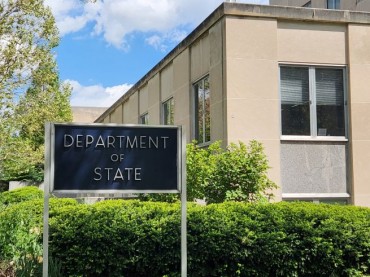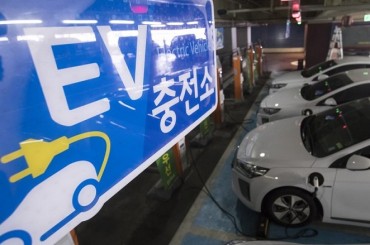
Health workers clad in protective gear carry out a COVID-19 test on a citizen at a makeshift virus testing clinic in Seoul on Nov. 26, 2020. (Yonhap)
SEOUL, Nov. 26 (Korea Bizwire) — The daily number of novel coronavirus cases in South Korea surpassed 500 for the first time in over eight months on Thursday due to sporadic cluster infections across the country as health authorities strive to curb a third wave of infections.
The country added 583 more COVID-19 cases, including 553 local infections, raising the total caseload to 32,318, according to the Korea Disease Control and Prevention Agency (KDCA).
It marks the first time that the country’s daily virus cases exceeded 500 since March 6, when the figure reached 518 due to a massive outbreak in the southeastern city of Daegu.
It is also above the peak in the country’s second wave of virus infections on Aug. 27, when 441 cases were confirmed in a single day.
The daily caseload has stayed in the triple digits since Nov. 8, with the figure over 300 from Nov. 18-22. It dropped to 271 on Monday but bounced back to 349 cases Tuesday and 382 cases Wednesday.
The new virus cases are expected to stay well above 400 on Friday, as 349 confirmed cases had been tallied across the country on Thursday as of 6 p.m., according to health authorities and local governments.
The figure was up 13 from the same time of the previous day. Of them, 225 were reported in the greater Seoul area, with 124 reported in other regions.
Health authorities have been trying to curb a third wave of the pandemic before a nationwide college exam on Thursday next week, but cluster infections from private gatherings, public facilities, hospitals and the military are dragging down their containment efforts.
“We are now in a situation where virus outbreaks can happen at any place we live in,” Health Minister Park Neunghoo said. “With the third wave of infections bulking up its size and pace, we must strictly follow social distancing rules.”
All of the 17 major cities and provinces reported additional virus cases.
Of the new locally transmitted cases, 402 were identified in the greater Seoul area, home to half of the country’s population.
Seoul added 208 more cases, its highest-ever daily tally, while the surrounding Gyeonggi Province and western port city of Incheon reported 177 and 17 cases, respectively.
The country’s southeastern South Gyeongsang Province added 45 new cases, while Busan, the country’s second-largest city, added 19.
North Jeolla Province and South Chungcheong Province each added 16 cases.
Among virus clusters, a total of 68 cases were tied to an Army boot camp in Yeoncheon, Gyeonggi Province.

Students keep a distance from one another while waiting in line to receive COVID-19 tests at a makeshift virus testing clinic at a middle school in Gwangju on Nov. 26, 2020. (Yonhap)
A church in western Seoul added 13 more cases, bringing the total to 119, while a sauna facility in southern Seoul reported nine additional cases, raising its total to 48.
The number of cases tied to a dance academy in western Seoul jumped to 66 after identifying the index patient on Monday
A total of 53 cases have been traced to a traditional Korean drum class in Busan and Ulsan, up six from the previous day.
An additional 15 people tested positive in cases traced to a group training event in Jinju, South Gyeongsang Province, raising the total to 34.
The number of new imported cases came to 30, up from 19 the previous day. The country’s total number of imported cases is now at 4,504.
Of the new infections from overseas, six of them were from the United States, followed by Indonesia with four.
To better cope with rising virus cases, the authorities raised the social distancing level by one notch to Level 2, the third highest in the country’s five-tier system, in the Seoul metropolitan area, where the majority of virus cases have been identified, and began to apply enhanced measures from Tuesday.
Other municipalities have been also enforcing tougher distancing rules depending on their virus situation. Level 1.5 distancing is currently in place in Gangwon Province and the country’s southwestern Jeolla region.
But since the country’s virus infections show no signs of letup, health authorities are likely to review options of enforcing stricter social distancing rules nationwide.
Under Level 2, nightclubs and other high-risk entertainment facilities must suspend their business, while wedding and funeral halls should restrict visitor numbers to a maximum of 100.
Cafes can offer only takeout and delivery services, and restaurants are banned from serving food on their premises after 9 p.m.
Health authorities said the upward trend of COVID-19 cases is likely to continue for a while, as they expect the effects of tightened social distancing measures in major regions to appear starting next week.
“Based on a mathematical prediction model, we may see daily virus cases between 400 and 600 until early December,” said Lee Sang-won, a senior official at KDCA. “We are currently focusing on breaking the chain of virus transmission by reducing contacts.”
But authorities said it is too early to discuss raising social distancing measures in the greater Seoul area to the second-highest level.
Level 2.5 curbs can be enforced if the country’s daily average number of local infections exceeds 400 in a one-week period.
The country reported two additional deaths from COVID-19, raising the total to 515. The fatality rate was 1.59 percent.
The number of seriously or critically ill COVID-19 patients came to 78, down three from a day ago, with 67 of them aged 60 or older.
Health experts said the portion of young virus patients has been rising recently and that the number of critically ill patients may not surge dramatically.
The total number of people released from quarantine after making full recoveries stood at 26,950, up 125 from the previous day, with 4,853 people isolated for COVID-19 treatment, up 456 from a day ago.
(Yonhap)






